Discover The Best Plant-Based Milk For You
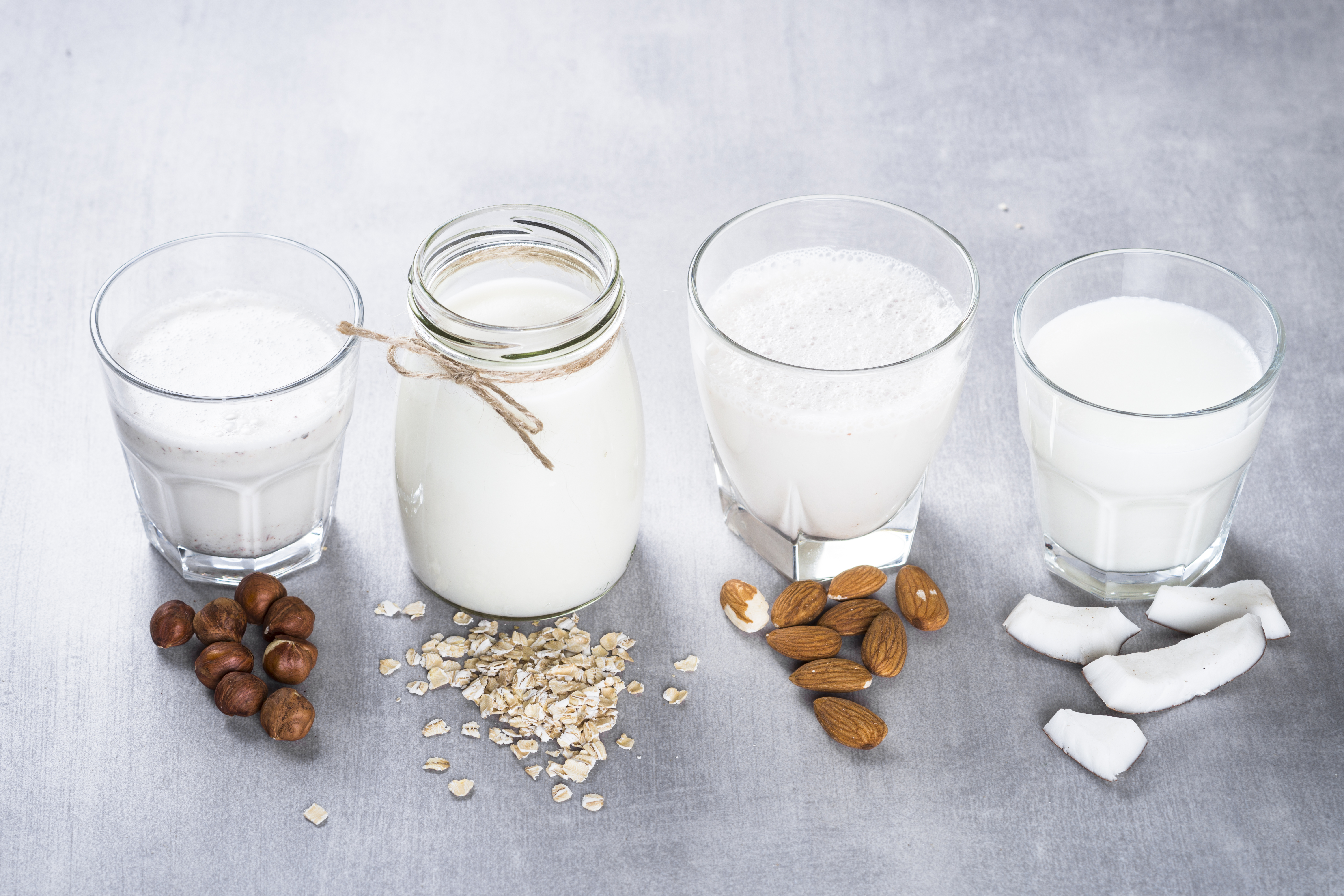
Discover the Best Plant-Based Milk For You. Plant-based milk alternatives have gained immense popularity among the masses. Although cow’s milk will forever be a staple in many people’s diets, plant-based milk alternatives have proven to be strong competitors for their flavors and benefits. Plant-based milk alternatives are great options for people with specific dietary restrictions, needs, allergies, or preferences. You can find legume, cereal, vegetable, seed, and nut-based milk alternatives in almost any supermarket. Plant-based milk alternatives can be a refreshing way to switch up your morning cereal while still reaping the benefits. Here is a list of the most common plant-based milk alternatives on the market. Read on to Discover The Best Plant-Based Milk For You.
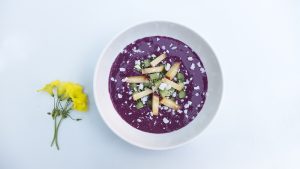
Soy Milk
What it is: Soy milk is a legume-based milk alternative that has been around since the 1950s.6 Soy milk is a classic choice people are comfortable with when introducing themselves to the world of plant-based milk. Its longevity is due to the similar flavor and consistency of cow’s milk.6 An individual will consume less saturated fat when drinking soy milk versus cow milk.6 This milk alternative can be a milk substitute for lactose intolerance and those not allergic to soy.
Benefits: Whether you’re counting your macros or needing to boost your protein consumption, soy milk is the choice for you. One of the reasons soy milk is a strong competitor to cow’s milk is due to its high protein content. Like cow’s milk, you can find almost 8g of protein per every 8 ounces of soy milk.7 Compared to the other plant-based milk alternatives, soy milk by far crushes it in the protein department. Besides protein, soy milk contains omega-3 fatty acids, which is excellent for brain function, and fiber, which aids in a healthy digestive tract.6 Furthermore, soy milk is abundant in minerals. These minerals include calcium, magnesium, iron, phosphorus, potassium, and zinc.6 Moreover, to further boost the nutrient content of soy milk, it is fortified with Vitamin A, B12, and D. What’s not to love?6
Quick Tip: There are many flavors in the market for soy milk. These include chocolate, vanilla, strawberry, etc. To refrain from excessive sugar consumption, stick with original, unsweetened, or plain to reduce the amount of added sugar.
How to make it at home: Spice up your quarantine life and try out this at home soy milk recipe by Andrea Nguyen.
Recipe(s): Are you feeling creative? Check out these simple and easy ways to use soy milk in your breakfast recipes provided by Melanie, RD, from Nutritious Eats.

Coconut Milk
What it is: Coconut milk is a nut-based milk alternative that is very popular in Asian cuisine.6 There are two types of coconut milk, canned and the beverage. Due to the thick consistency, canned coconut milk provides a sweet, creamy texture in sauces or soups.6 Canned coconut milk is the star of the show for many soup, rice, and curry recipes. Because of the thick consistency, a full can of coconut milk has a tremendous amount of fat, saturated fat, and calories compared to coconut milk’s beverage form.6 Canned coconut milk is not recommended to drink on its own unless you like very thick, creamy milks and are trying to gain weight. As mentioned before, canned coconut milk is primarily used for cooking purposes only. The diluted beverage coconut milk is meant to drink as a milk alternative. This milk provides a mild, nutty flavor with a slightly thick consistency that is perfect for morning smoothies and beverages. The watery liquid is milk from grated and squeezed coconut meat mixed with diluted in water.6 Manufacturers provide this form of coconut milk for consumers who desire to drink coconut milk regularly. Table 1 demonstrates the difference in the fat content of coconut milk between canned and diluted forms.6
Table 1. Fat Content of Coconut Milk
| Nutrition Content | Canned | Diluted Beverage |
| Fat (g) | 42.42 | 4.51 |
Benefits: Since coconuts are the main ingredient, coconut milk (canned or beverage) is an excellent Vitamin A and Vitamin B12 source. Vitamin A is responsible for bone formation. Vitamin B12 supports red blood cells’ health.
Quick Tip: Instead of using a dairy creamer, put a splash of coconut milk in coffee or tea for an added nutty flavor. In the mood to bake? Use a 1:1 ratio of canned coconut milk as a substitute for dairy products.
How to make it at home: All you need is 1 (8 oz.) package of unsweetened shredded coconut and 4 cups of near-boiling water. Check out Gina Eyekmans recipe for a step-by-step guide to make a homemade coconut milk.
Recipe(s): These recipes all include canned coconut milk:
No Cook Strawberry Coconut Soup
Crockpot Vegan Chickpea Curry
Coconut Curry Zoodle Ramen
Pineapple with Coconut Black Sticky Rice
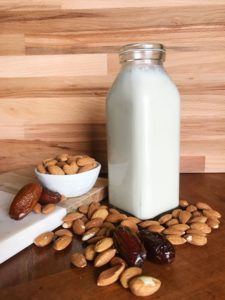
Almond Milk
What it is: Almond milk is dominating the market of plant-based milk alternatives. According to Amelia Lucas, author of CNBC, almond milk reached $1.3 billion in U.S. sales in 2019. This nut-based milk has shown itself to be an excellent option for its low-calorie content (about 35 calories per 8 oz.), low-fat content, and fantastic calcium content.7
Benefits: Almond milk is fortified with a plethora of vitamins and minerals, such as Vitamin D and Vitamin E.6 Vitamin E acts as an army for your skin by fighting free radical damage and it encourages your body to increase collagen production. Collagen is a crucial player to having firm-looking skin plus slowing fine lines or wrinkles.
Quick Tip: Buy unsweetened, plain, or original for reduced added sugar.
How to make it at home: Essentially, almonds are soaked in water (overnight), blended, then strained to extract the milk. Sweeteners like honey are optional for taste. Keep the kiddos busy and check out how easy it is to make almond milk at home. Here is a 4-ingredient Healthy Almond Milk recipe the entire family can enjoy.
Recipe(s): Add almond milk to your favorite smoothie. Fight your wrinkles and bring a youthful glow to your skin with these 5 Anti-Aging Smoothies To Make Your Skin Look Younger.

Oat Milk
What it is: Oat milk is the only cereal-based milk alternative on this list. Flavor-wise, oat milk has a mild flavor with a hint of sweetness. It’s a go-to for individuals that have a nut, dairy, soy, or gluten allergy.1 (Check the label of the oat milk brand to confirm it doesn’t share a facility that also processes gluten, nuts, soy, etc., to avoid cross-contamination). What separates oat milk from other plant-based milk alternatives is the absence of saturated fat.6
Benefits: Oat milk is a dairy-free and vegan free milk alternative. Its high fiber promotes healthy bowel movements, supports heart health, maintains the digestive tract’s health, and increases satiety.1 Because oat milk isn’t as nutritionally beneficial as oats themselves, manufacturers fortify oat milk with a plethora of vitamins such as Vitamin E and Vitamin D.1 Vitamin D is linked to decreasing depression, supporting the immune system, and fighting inflammation.
Quick Tip: If making oat milk at home, do not over blend, and use a tightly woven strainer for the perfect oat milk texture. Add to your morning latte for a boost of flavor.
How to make it at home: With only three ingredients, this link can explain how to make oat milk in a comical but straightforward way.
Recipe(s): Want to spice up your morning pancakes? Check out our gluten-free tahini banana oat pancake recipe. That’s a mouthful, and so are the pancakes.
Hazelnut Milk
What it is: This nut-based milk is a gluten-free option full of vitamin E, healthy fats, fiber, and protein. The hazelnut originates from the northern hemisphere and thrives in somewhat mild winter and cool summer.4 Most hazelnut spreads have high sugar content, and the milk form does not stray. Its sweet taste will only tempt you to keep sipping and enjoying the nutty flavor this milk has to offer. It has been deemed a fan favorite for its flavor while providing nutritional benefits like Vitamin E, calcium, protein, and omega-6 and omega-9 fatty acids.
Benefits: Vitamin E is fantastic for protecting cells against damage. The fat content in hazelnut milk is due to the omega-6 and omega-9 fatty acids. The body doesn’t naturally produce omega-6 fatty acids and it is essential to get it through dietary sources. Omega-6s maintain brain function and the vitality of the skin.5 Omega-9 is a monounsaturated fat critical for the body because it combats heart disease.3 Another benefit of hazelnut milk is folic acid.4 Folic acid is a must for pregnant women. Sufficient consumption of folic acid enables a fetus to develop the nervous system and reduce the risk of potential future complications.
Quick Tip: Opt-in for unsweetened hazelnut milk for less added sugars.
How to make at home: This recipe outlines how to make your hazelnut milk at home. Freshwater, hazelnuts, a bit of vanilla extract, a pinch of salt, and you are all set.
Recipe(s): Change the oatmeal routine with this Hazelnut Oatmeal Baked Pears recipe and enjoy it on the go.
Plant-based milk alternatives can be overwhelming due to the countless options in the market, but each is unique in its own way. Plant-based milk provides versatility and exceptional flavors and nutrients to any dish. Were you able to Discover the Best Plant-Based Milk For You? Which one sounds like a winner for your taste buds? Please leave it in the comment section below.
Comparison of Milks
Here is a breakdown of the various ingredients found within each milk option.

Download a copy of the table:
Milk Alternative Table
Want more recipes?
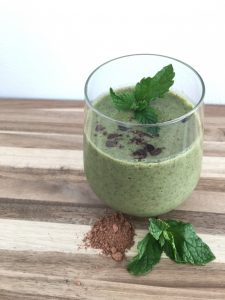
Discover The Best Plant-Based Milk For You and use it to boost your morning fiber with this green smoothie option.
Written by Yahaira Turcios, Dietetic Intern, and Sarah Koszyk, MA, RDN
References
- Edinger, J. (2019). Is Oat Milk Good for You? A Dietitian Explains This Trendy Dairy Alternative. Retrieved January 12, 2021, from, https://health.clevelandclinic.org/is-oat-milk-good-for-you-a-dietitian-explains-this-trendy-dairy-alternative/.
- LDN, R.D. Merengo, K. (2018). What are the health benefits hazelnuts? Retrieved January 12, 2021, from, https://www.medicalnewstoday.com/articles/323807#how-to-add-hazelnuts-to-your-diet.
- S., R.D. Semeco, A. (2018). 7 Ways Hazelnuts Benefit Your Health. Retrieved January 12, 2021, from, https://www.healthline.com/nutrition/hazelnut-benefits#TOC_TITLE_HDR_2.
- Milks and Health. (n.d.). Hazelnut Milk. Retrieved January 12, 2021, from, https://www.milksandhealth.com/hazelnut-milk/
- Nunez, K. (2018). Linoleic vs. Oleic Acid. Retrieved January 12, 2021, from, https://healthyeating.sfgate.com/linoleic-vs-oleic-acid-11122.html.
- Perrish, C. (2018). Moo-ove Over Cow’s Milk: The Rise of Plant-Based Dairy Alternatives. Practical Gastroenterology Journal. Retrieved January 11, 2021, from, https://med.virginia.edu/ginutrition/wp-content/uploads/sites/199/2014/06/January-18-Milk-Alternatives.pdf.
- (n.d.). Comparison of Cow’s Milk and Unflavored Milk Alternatives. Retrieved January 12, 2021, from, https://www.todaysdietitian.com/newarchives/images/pdf/Milk_table.pdf.
Recent Posts
2 Comments
Leave A Comment Cancel reply
Get 10 Must-Have Protein-Rich Powerhouse Snacks
These will fuel and satiate you.
You’ll also get access to my newsletter for the latest recipes, health tips, and exclusive offerings.
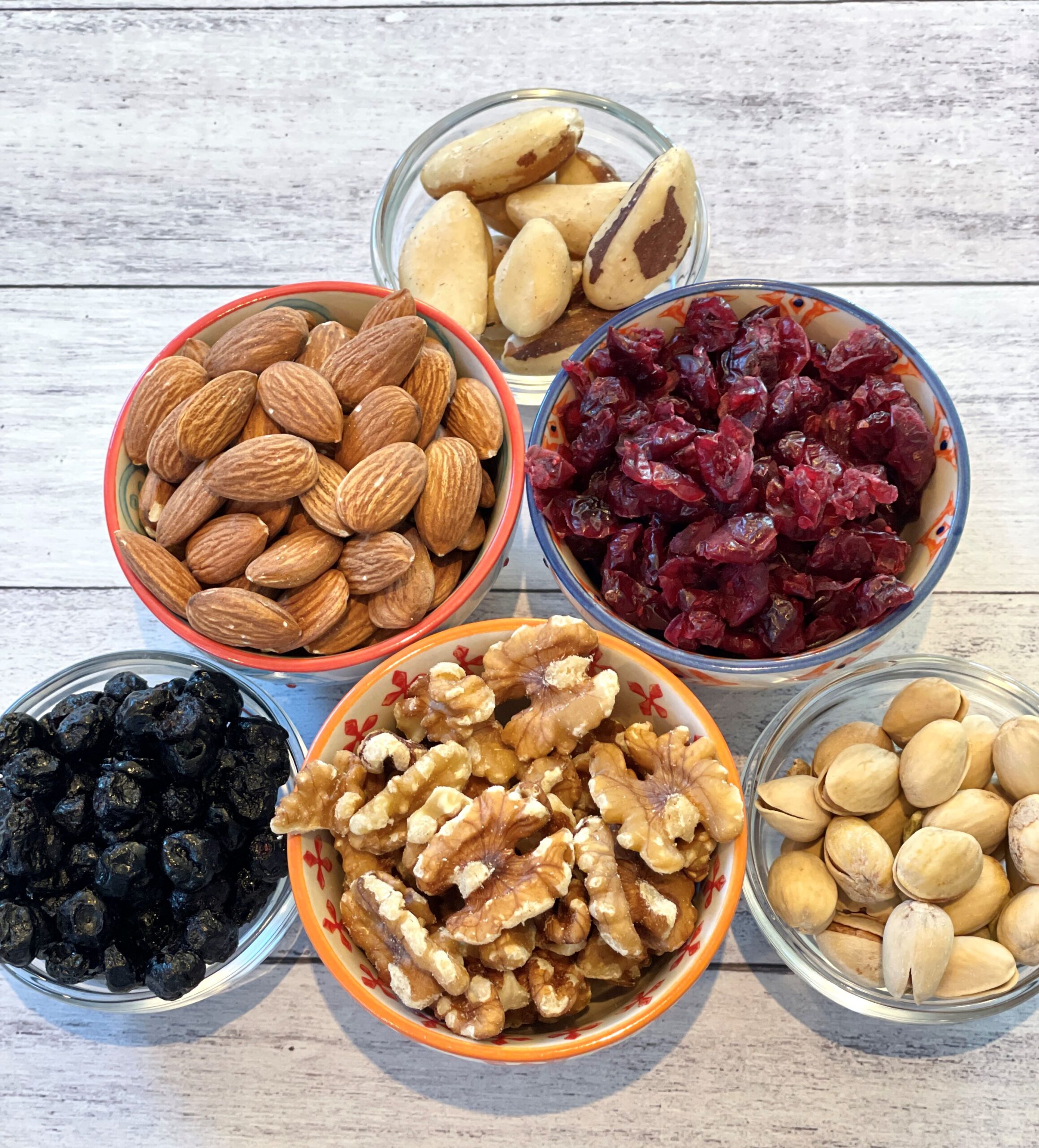


Sign me up for newsletter
Absolutely. Thanks for your interest!